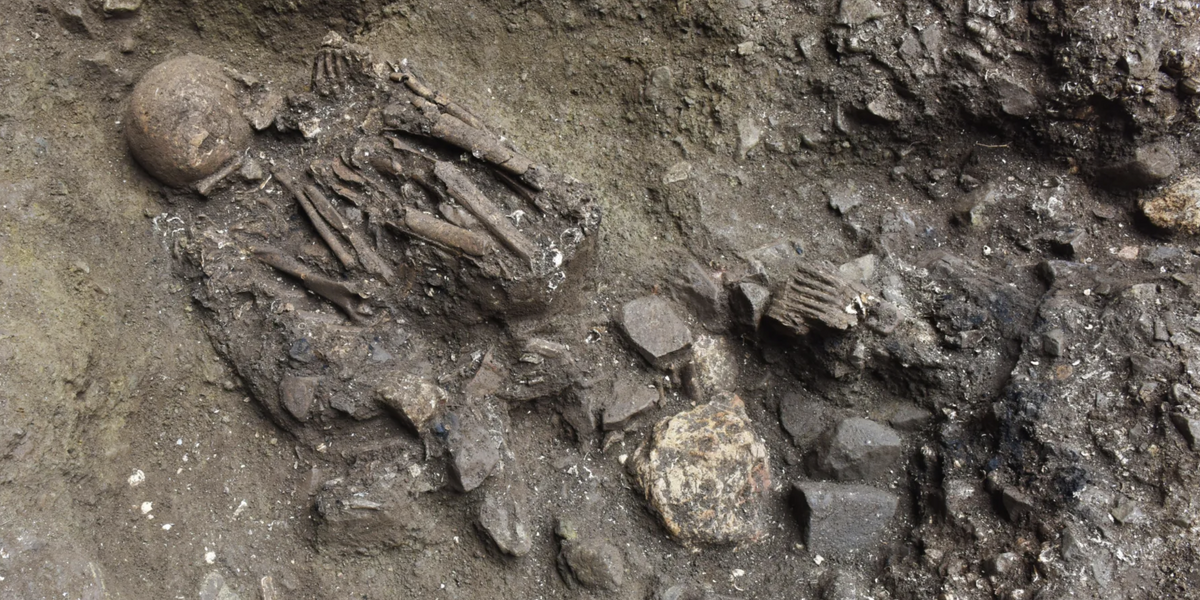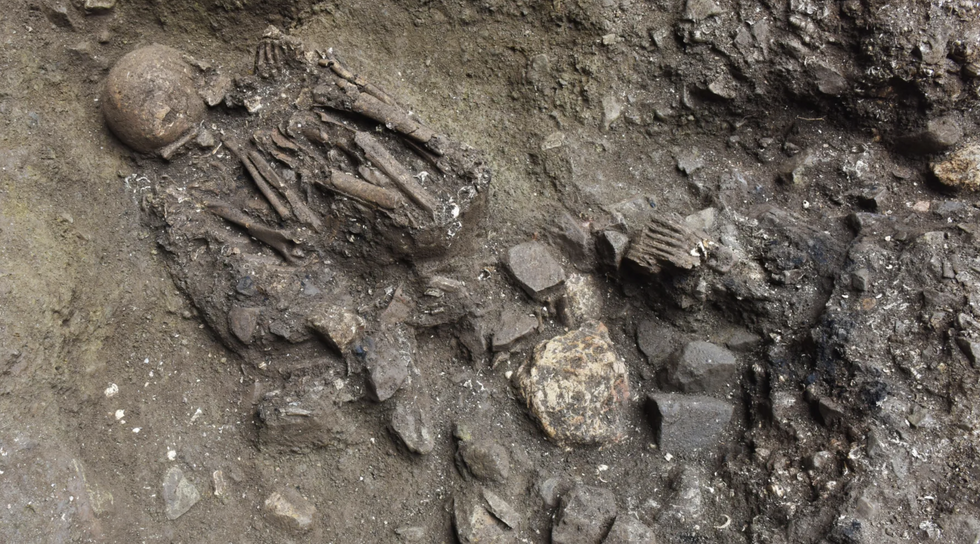



Chinese scientists have discovered a mysterious "ghost lineage" after analysing a 7,100-year-old female skeleton unearthed in southwestern China's Yunnan province.
The ancient woman, found at the Xingyi archaeological site, represents a previously unknown human lineage that researchers had only theorised about until now.
The skeleton was discovered beneath all other burials at the site, with no grave goods accompanying the remains.
Carbon dating revealed she lived approximately 7,100 years ago, whilst isotope analysis of her diet indicated she was likely a hunter-gatherer.

The remains of Xingyi_EN found at the burial site
Yunnan Institute of Cultural Relics and Archaeology
Genomic analysis of the woman, designated Xingyi_EN, revealed her ancestry was not similar to East and South Asians but closer to a "deeply diverged" Asian population whose genes contributed to ghost populations seen only in modern Tibetans.
The mystery ancestry discovered in Xingyi_EN does not match Neanderthals or Denisovans, both well-known ancient populations that contributed some "ghost" DNA to humans.
Rather, the skeleton provides evidence of a previously unknown lineage that diverged from other humans at least 40,000 years ago, according to researchers who have named it the Basal Asian Xingyi lineage.
For thousands of years, this lineage remained separated from other human groups, meaning there was no admixture interbreeding that would mix their DNA.

The dig is taking place near the Yuanjiang River (aka Red River)
Getty
"The possible isolation allowed this ancestry to persist without apparent admixture with other populations," said study co-author Qiaomei Fu, a paleontologist at the Institute of Vertebrate Paleontology and Paleoanthropology in Beijing.
At some point, Xingyi_EN's relatives did interbreed with other groups of East Asian ancestry, mixing DNA. "The mixed population has lasted for quite a long time and contributed genes to some Tibetans today," Fu explained.
The discovery helps solve a long-standing mystery about Tibetan origins. It is widely known that around 80 per cent of the genetic composition of Tibetan Plateau populations originates from northern Chinese populations dating back 9,500 to 4,000 years ago.
Yet the origin of the remaining 20 per cent has remained unknown and is referred to as "ghost ancestry" by the academic community. The Xingyi skeleton appears to represent the missing link between Tibetans and this ghost lineage.
The research, detailed in a study published on Friday in the peer-reviewed journal Science, analysed 127 human genomes from southwestern China.
Fu and colleagues examined skeletons dated between 1,400 and 7,150 years ago, most from Yunnan province, which today has the highest ethnic and linguistic diversity in all of China.
"There likely were more of her kind, but they just haven't been sampled yet," Fu told Live Science in an email.
However, the researchers cautioned that these results should be taken with care.
Given the genetic evidence comes from just a single person, further research is needed to fully understand the relationship between Xingyi_EN and the Tibetan ghost lineage.
